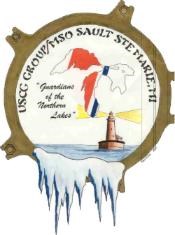NEWS RELEASE
U.S. NATIONAL COAST GUARD
**************************** Coast Guard ice breaking season ends in western Great Lakes
The end of Operation Taconite in the western Great Lakes Wednesday brought the U.S. Coast Guard ice breaking season to a close.
Operations Taconite and Coal Shovel, the latter of which ended April 7, 2011 in the upper Great Lakes, are the largest bi-national domestic ice breaking efforts.
Operation Taconite is carried out in Lake Superior, the St. Marys River, the Straits of Mackinac, and northern Lake Huron, while Operation Coal Shovel encompasses the St. Lawrence Seaway, Lake Ontario, Lake Erie, the Detroit / St. Clair River System, and southern Lake Huron.
Operation Taconite began Dec. 6, 2010.
Working together during this year's ice breaking season were crews aboard: U.S. Coast Guard Cutters Mackinaw; Alder; Hollyhock; Mobile Bay; Neah Bay; Katmai Bay; Biscayne Bay; and Morro Bay, temporarily assigned to the Great Lakes from their homeport of New London, Conn.; as well as Canadian coast guard icebreaking ships.
The cutters ensured commercial traffic transited the waterways safely and any flooding concerns were quickly mitigated.
In total, U.S. Coast Guard icebreaking efforts exceeded 3,379 hours during the 120 days of Operation Taconite.
Together, the eight cutters directly assisted 578 commercial vessels.
Initial estimates show that the operation allowed more than $300 million in bulk commodities to move through the waterways.
Also assisting the cutters and ships with ice reconnaissance were air crews aboard Coast Guard Air Station Traverse City helicopters.
The aircraft provided valuable aerial information on ice concentrations for icebreaker management, minimizing risk to commercial shippers.
In total, aircrews flew more than 30 missions.
Although the majority of ice has melted from the waterways, there may still be lingering ice that could pose hazards to recreational vessels.
Likewise, the water temperatures are still very cold and could cause hypothermia within a matter of minutes.
Recreational users of the waterways should consider these factors before venturing onto the water.
**************************** ///
